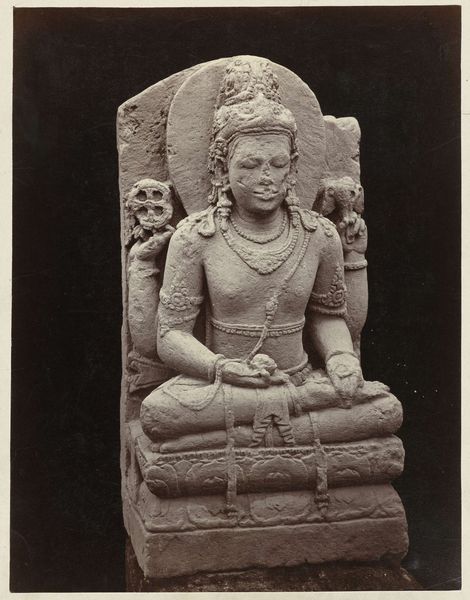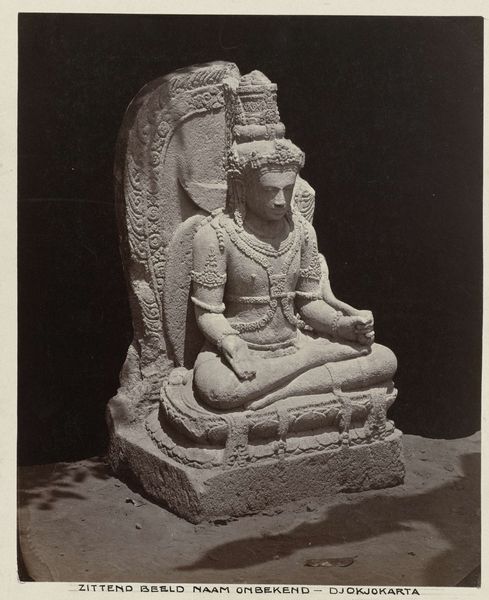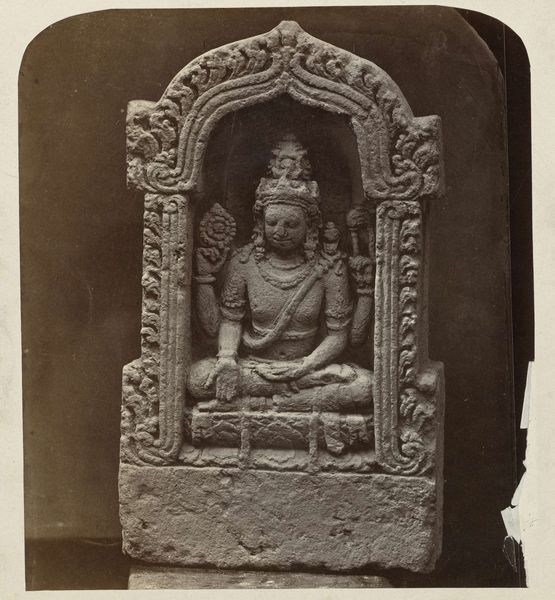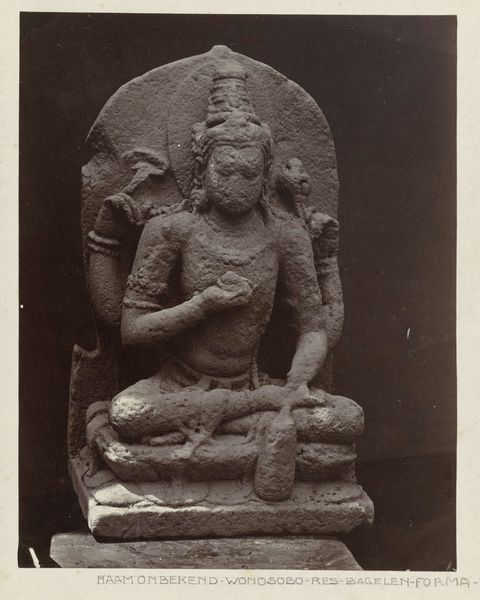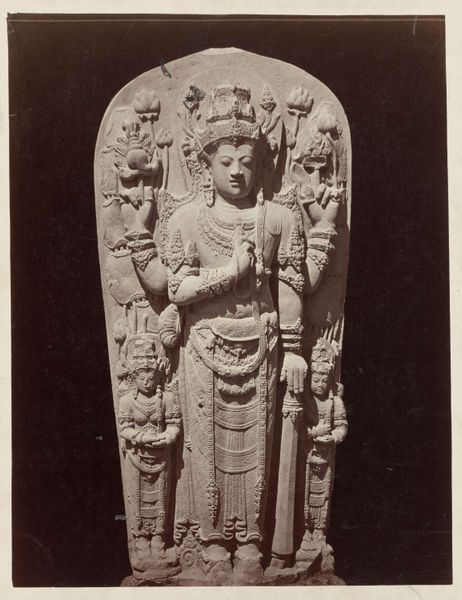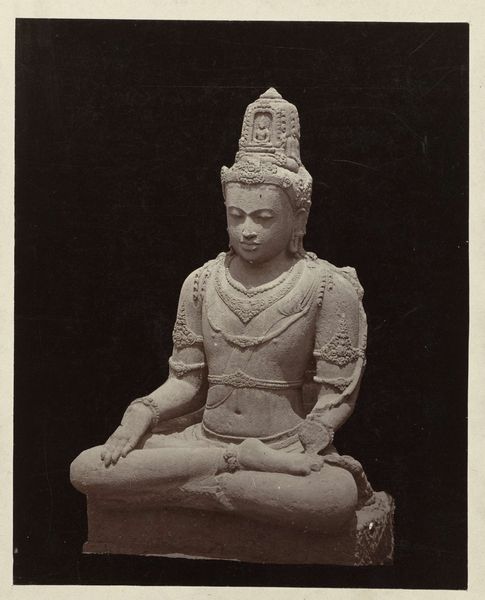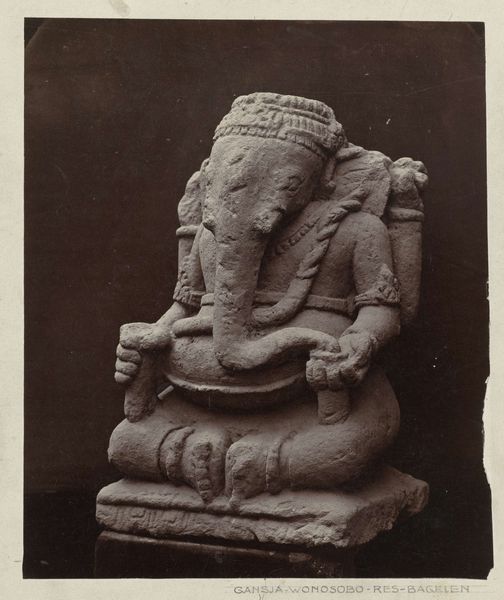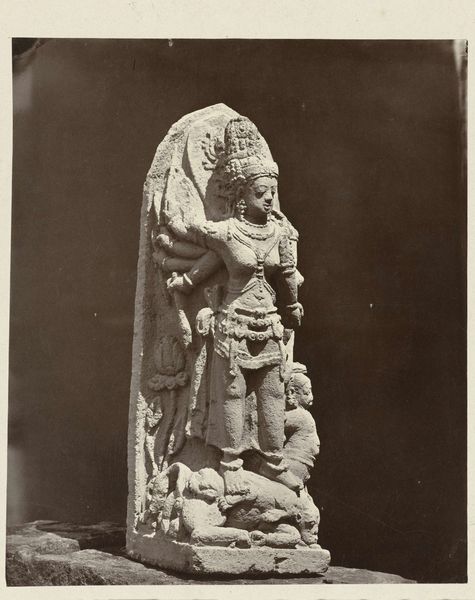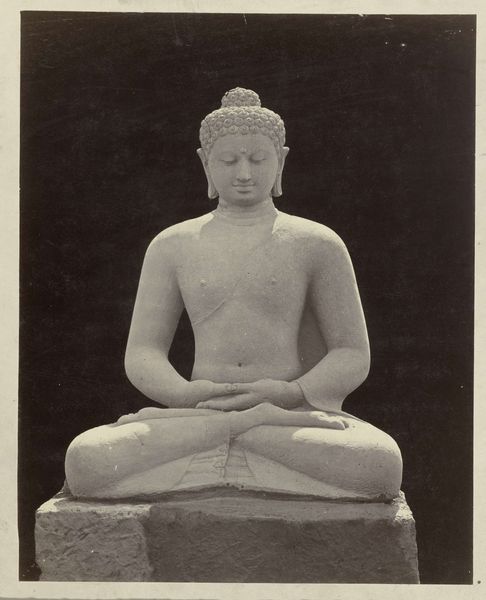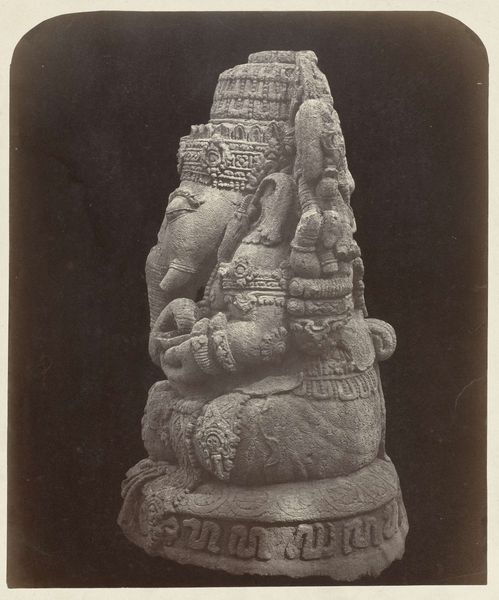
Four armed Shiva of which one arm, probably displaying the varada mudra, has broken off. Dieng Plateau, Wonosobo district, Central Java province, 9th century. Possibly 1864 - 1867
0:00
0:00
relief, photography, sculpture
#
sculpture
#
asian-art
#
relief
#
figuration
#
photography
#
ancient-mediterranean
#
sculpture
#
19th century
Dimensions: height 260 mm, width 210 mm
Copyright: Rijks Museum: Open Domain
This photograph by Isidore Kinsbergen captures a 9th-century stone sculpture of a four-armed Shiva, found on the Dieng Plateau in Central Java. The sepia tones and visible texture of the stone give the image a tangible, almost tactile quality. The figure is seated in a meditative pose, but the fragmented arm disrupts the symmetry, drawing attention to the sculpture's materiality and history. Consider the composition; the artist has chosen to present a figure that lacks wholeness. The missing arm, likely displaying the varada mudra or gesture of charity, destabilizes the completeness of the deity. This incompleteness invites contemplation on themes of loss, time, and the transient nature of physical forms. We see a cultural code in the iconography of Shiva; a deity simultaneously represents destruction and creation. Here, the formal qualities of the artwork intertwine with cultural and philosophical concepts. The fragmentation of the sculpture can be seen not merely as damage, but as a powerful symbol, revealing how even sacred objects are subject to entropy. Through its form, this work embodies a discourse on impermanence, challenging fixed notions of divinity.
Comments
No comments
Be the first to comment and join the conversation on the ultimate creative platform.
